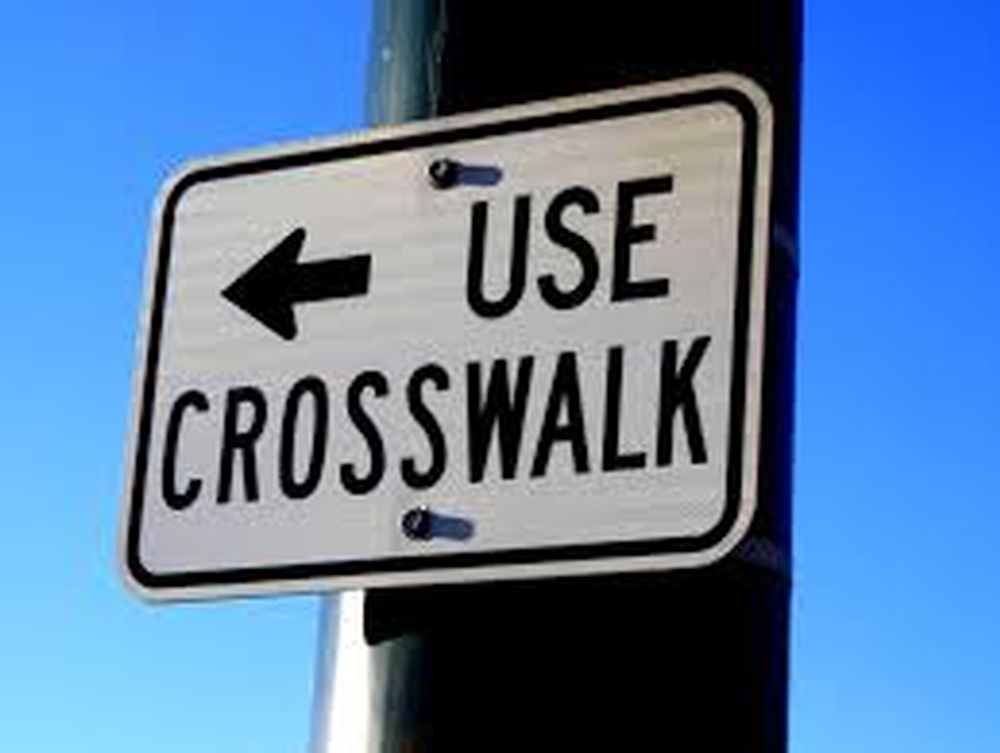
Roadways today are more crowded than they’ve ever been, with population steadily growing and fewer drivers refusing to “age out” of driving themselves. With that in mind, pedestrians face an increasing risk whenever they set out to cross a street of fast-moving, two-ton killing machines.
When we think about people crossing a road, the term “jaywalking” typically pops into our minds. Jaywalking is the generic term for the illegal crossing of a road by a pedestrian. The term has its origins from the words “jay” (an inexperienced person) and “walk.” So a jaywalker is quite literally an inexperienced walker – someone unaccustomed to walking (across a street, that is).
In North Carolina, our legislature has enacted several laws to govern when and where a pedestrian may cross a roadway and whether the pedestrian or the vehicle must yield. I’ll discuss the main ones here briefly. NC General Statutes § 20-172 instructs pedestrians at a crosswalk or intersection with special pedestrian-control signals in place to cross only when those signals display a “WALK” signal and not to cross when those signals display a “DON’T WALK” signal. If a pedestrian is at an intersection without special pedestrian-control signals, the pedestrian is subject to the vehicular traffic-control signals (i.e. crossing with a green light).
According to GS § 20-173, where traffic control signals are not in place or in operation, a driver MUST yield the right-of-way, slowing down or stopping if need be to so yield, to a pedestrian crossing the roadway within any marked crosswalk or within any unmarked crosswalk at or near an intersection. This means that pedestrians have the right of way when crossing in a crosswalk in the middle of a stretch of road or near an intersection where there are no stoplights. Many drivers fail to be on the lookout for pedestrians crossing, even in marked crosswalks, such that the state often has to erect signs next to or within the crosswalks informing drivers that they must yield to pedestrians in the crosswalk.
When the average person thinks of jaywalking, oftentimes they think of simply crossing in the middle of a roadway where there is no designated crosswalk. However, NC law does not specifically ban the crossing of a roadway outside of a crosswalk or intersection. GS § 20-174(a) declares that every pedestrian crossing a roadway at any point other than within a marked crosswalk or within an unmarked crosswalk at an intersection shall yield the right-of-way to all vehicles upon the roadway. In other words, you can essentially cross wherever you’d like, but if it’s not at an intersection or in a designated crosswalk, you’re going to have to wait for those cars to go past first.
As dangerous as illegally and recklessly crossing a roadway may sound, under North Carolina law, violation of these laws is just an infraction, punishable by up to a $100 fine, according to G.S. § 20-176. However, if a collision between a car and a pedestrian occurs and the pedestrian is at fault in the eyes of the law, then he or she will be on the hook for whatever damages ensue. On the flipside, if the driver is at fault, he’s on the hook for injuries to the pedestrian and can face criminal charges for failure to yield or misdemeanor death by motor vehicle if the pedestrian is killed.
The takeaway from this discussion is that both drivers and pedestrians need to know the rules of the road. A driver may feel powerful and superior in his steel cage, but under certain circumstances he or she will need to slow his roll just a tad in order to let pedestrians cross. Speeding through an intersection or crosswalk is not worth the risk imposed to innocent bystanders.
